Tech solutions and real world tips
Matt Tomkins
WORKSHOP EDITOR
Our workshop puppet master, Matt has a real penchant for restoring British classics in particular.
This month A varied month including some MGF fettling, Morris Minor titivation and a pre-race health check for the Austin Seven.
Rich March
PRO BUFFER
New recruit Rich runs UK Detailing Academy. Our expert at making things shiny.
This month Shows you how to safely remove tints, badges and stickers from your classic without causing any harm.
Ed Hughes
WORKSHOP GENIUS
A former teacher, Ed singlehandedly keeps a fleet of obscure classics on the road. He’s never owned a modern car and intends keep it that way.
This month Some ‘interesting’ rust repairs are continuing on the 1988 Lada Riva in fits and starts. The ZAZ Tavria should be driving around again by the time you read this.
Nigel Clark
DIY RESTORER
Nigel’s driveway achievements rival those of pro mechanics. He’s our resident Triumph and BMW expert.
This month Too much top-down fun in the sun means that it’s 3000-mile service time for two of the classic fleet.
TAX AND MOT
How do I get tax exemption?
Q I've bought a Talbot Sunbeam that should be tax-free, but isn't. What do I do to resolve this?
Brian Lansdowne, Esher
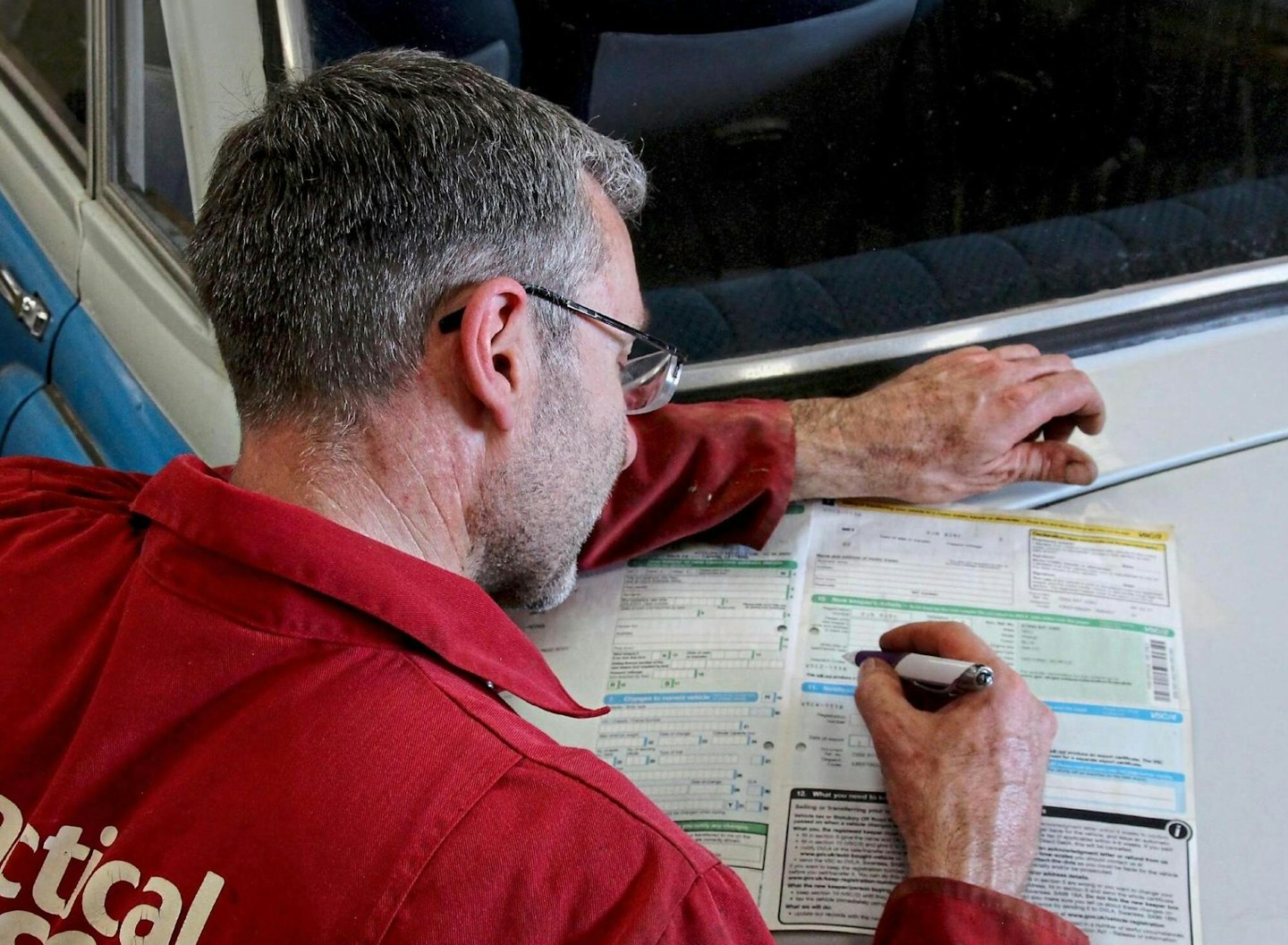
Registering for ‘Historic’ status should be a simple process.
ALL FINE!
Apply for tax or SORN as soon as is possible after buying a car, to avoid a fine.
BE RESOURCEFUL
You may be able to get a letter from a DVLA-recognised club stating your car's age and pedigree if needed. Alternatively, the British Motor Museum can provide heritage certificates for many British marques.
LOST IN TIME
If you claim Historic tax on car build date rather than first registration, the V5C will then show build date in place of first registration date.

Ed says
A Take the V5C to a Post Office which handles car tax. Ask to change taxation class to 'Historic' and the clerk should do the rest. Note the MOT-free status arrives on the car's 40th birthday – but Historic tax class starts on April 1 in the year after the car turns 40. So, in April 2025, all cars made in 1984 became tax-free.
It's administered on date of first registration. If your car is significantly older, ask a DVLArecognised club to supply evidence, and change it to date of manufacture. If the difference is a year, and you only use the car a couple of months, though, it's probably not worth the bother and potential expense.
Car tax can only, in theory, be issued if the car's insured. If you ever let its insurance lapse, you must SORN it, otherwise you'll receive a fine for keeping an uninsured vehicle 'on the road'. The DVLA may ask to inspect a car if you apply for a V5C (or renew an old-style log book or V5) for a vehicle that has been untaxed for many years. If the vehicle is part-dismantled (maybe even just missing a panel or two), the inspection may result in the suspension of the vehicle's registration until it's put back together and can be proved to be one whole and largely-original car. This has an anti-crime motive, but can cause bother for the innocent enthusiast. The car should be fully assembled. The chassis plate or stamping should be present and fitted and match the numbers on the V5/log book. Ideally, obtain the V5C before starting restoration work, so that there's no risk of wasting your time and money. If you've already completed work, you might have to work a bit harder to demonstrate the car is mostly-original.
MATT SAYS

‘Don't worry if you still have valid tax that you've paid for – when the tax class is changed, you'll be refunded. This is done by cheque for annual-purchased tax or by direct debit if that’s your payment method. For a quick V5C turnaround after buying a car (to tax or SORN it faster), change ownership online at gov.uk.’
FORD CORTINA
MAKING CONTACT
Q I’d like to convert my Cortina to electronic ignition. I've seen a period unit that retains the original points.
James Horace, Newquay
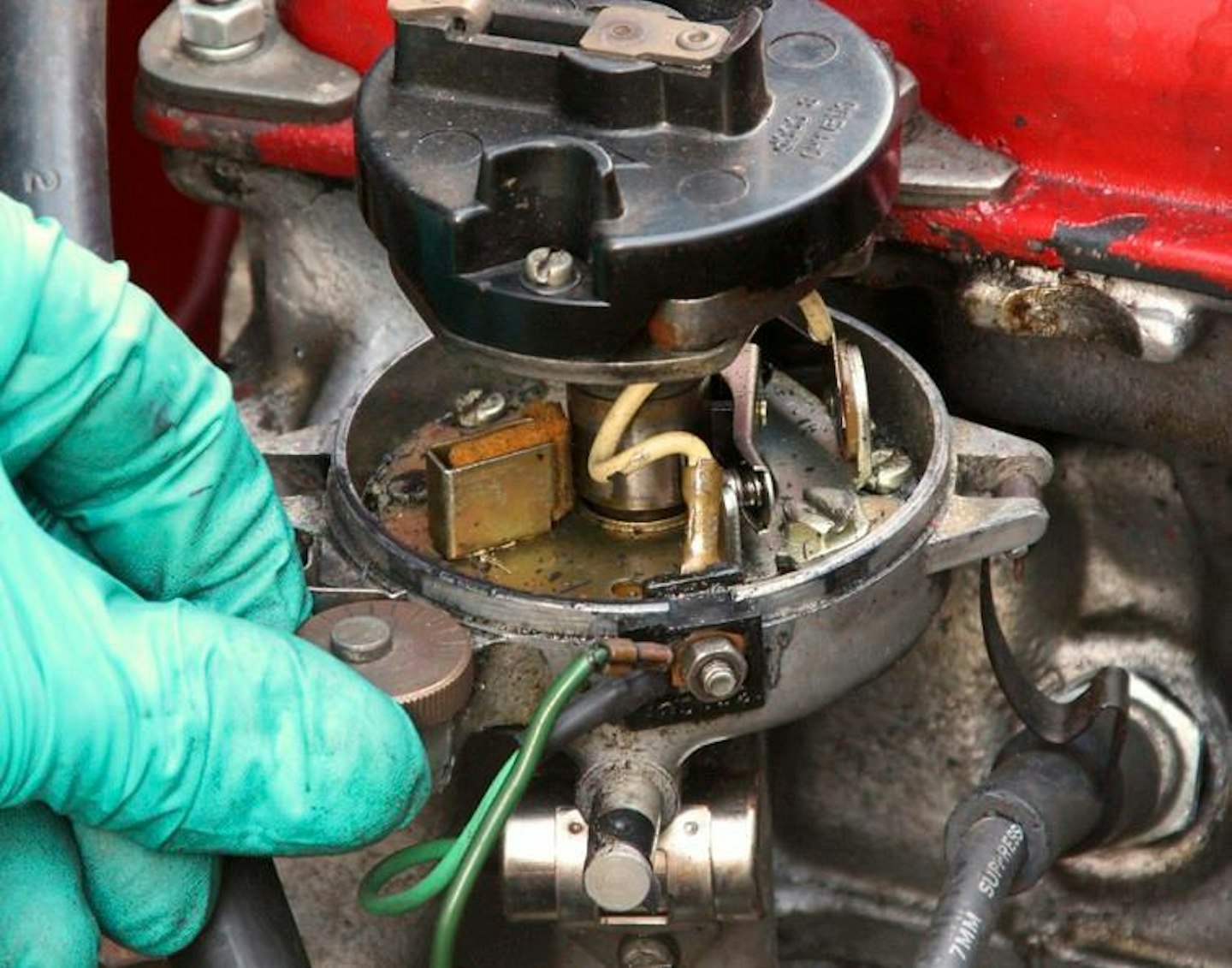
Points: not as bad as you remember them!
Nigel says
AElectronic ignition gives consistent spark strength and dead-accurate spark timing. The latter depends on electronic triggering, rather than the opening of mechanical contact breakers – so this advantage is lost by retaining the points. If you’re fitting electronic ignition, we suggest going for a full system. It’ll never need adjusting once properly set up. That said, contact breakers are perfectly adequate and difficulties are more likely to be caused by wear or maladjustment of the distributor or the wrong distributor being fitted. Problems when hot often stem from a faulty condenser, mis-wired ballast ignition system, incorrect coil or coil wired up in reverse. Hesitations and misfires: bad rotor arm, HT leads and caps or spark plugs.
CLUTCHES
Please release me
Q However I adjust it, the release bearing on my fivespeed (Ford Type 9) Morris Minor always returns such that it's in light contact with the pressure plate. It is hydraulic. Is this correct?
Martin Evans, Tredegar

Matt says
A Clutches may be operated by cable, rods or hydraulics. In many cases, when they're adjusted in accordance with the instructions, the release bearing is found to rest lightly on the pressure plate when not in use (constant contact). Hydraulic systems in this case are designed so that – no matter how you set the pushrod – after pressing and releasing the pedal, the hydraulics return to leave the release bearing in light contact. Note that this is only possible with a roller release bearing. A carbon release, such as that originally fitted to the Minor, would be quickly ruined.
In some cases, however – such as the Minor’s standard 4-speed rod linkage set-up, the release bearing is held off the pressure plate so that it remains stationary when not in use (noncontact). In this case, a hydraulic system (where fitted) must be correctly set to give a satisfactory rest point.
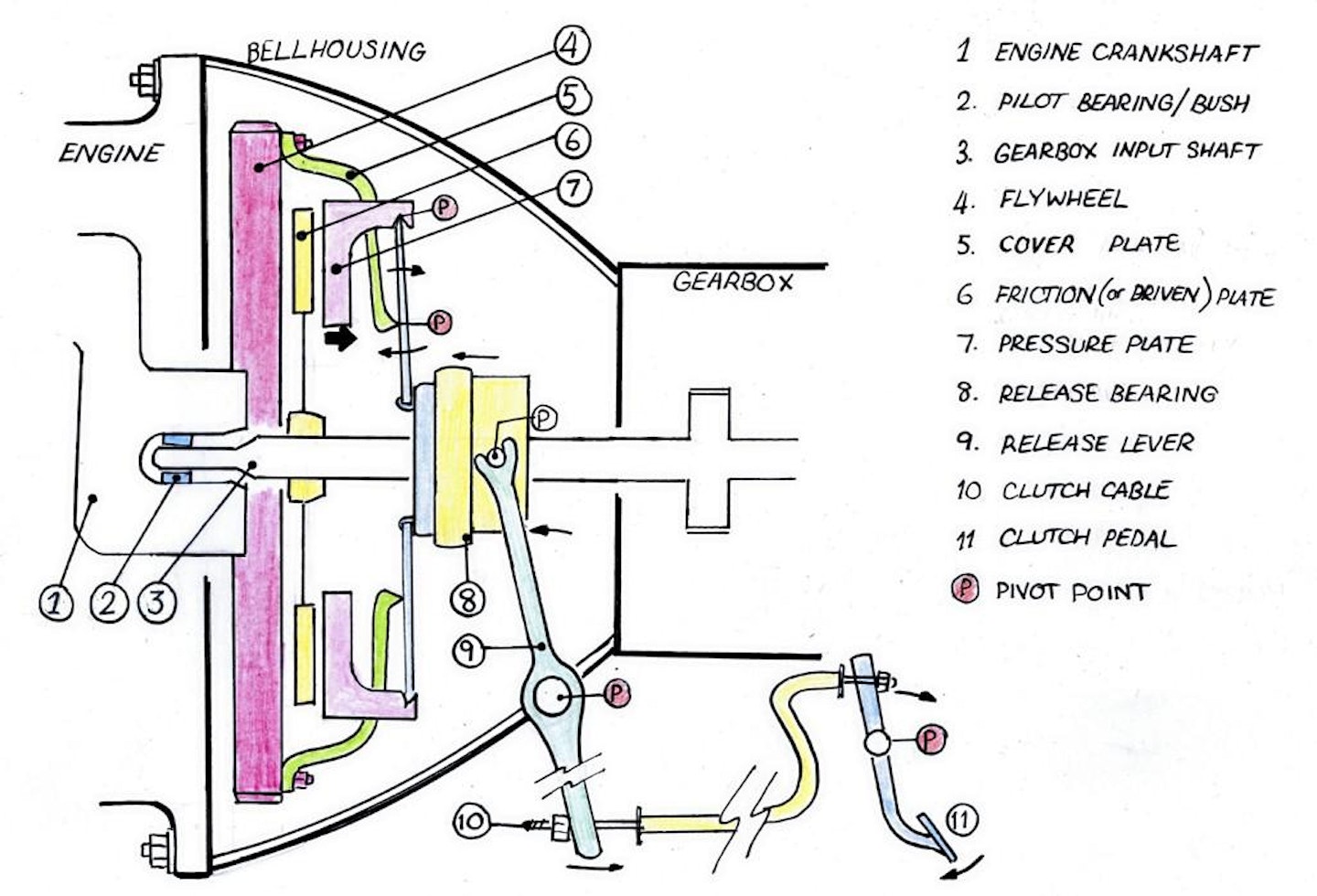
You'd think the latter non-contact system was better: no wear and tear when not in use. However, for a roller release bearing, we think the logic in a constant-contact system is to do with what happens when the clutch is pressed. It's presumably considered better to have the bearing spinning already when it's suddenly loaded up.
The non-contact system sees it slammed into the pressure plate, having to accelerate from a stop to 4000rpm in an instant while fully-loaded. Note: the release bearing should only just touch the pressure plate: if it's in constant hard contact, the forward pressure on the crankshaft will grind away the engine thrust bearings.
FORD GRANADA
HOT UNDER THE COLLAR
Q I’ve bought a Ford Granada with overheating problems. What should I do?
David Grant, Swansea

Coolant leaks cause overheating. Some are not so obvious!
Ed says
A Flush the system repeatedly until the water runs clear. Then fit a new water pump, thermostat, radiator, cap and radiator fan switch and relay. Check that the fan operates when the fan switch wires are put together. Make sure also that it pulls air through the grille towards the
engine (reverse wires if not). Check all hose clips, hoses and small water passages into the engine. Check the heater is not leaking. If overheating persists, change the head gasket. Check block and head for corrosion or warping.
REMOTE SERVOS
A long brake
Q I released my Morris Minor's servoed brakes joining a roundabout and the car continued to slow down. I drove it to safety, turned the engine off and it was instantly fine again. It's done it several times since.
Edgar Jackson, Bushey

Check the black rubber ring is not sticking down.
Matt says
A As a preliminary check, make sure there's a small clearance between the brake pedal pushrod and the piston of the brake master cylinder. Check the piston is able to return to its rest position, up against the circlip at the end of the cylinder bore and is not hampered by rust or swollen seals.
If the piston can't return fully, the brakes will tend to bind on – to a greater or lesser extent.
Make sure a brake lining hasn't detached itself and been binding inside a brake drum. In this case, we'd expect the car to pull to one side, lock a wheel or heat one wheel up more than the others during driving.
We think, though, the most likely explanation is that there's a problem with your remote brake servo. There are three main elements to the servo. The main vacuum chamber is the largest and most obvious.
It's divided in two by a rubber diaphragm with a pushrod attached. The chamber is connected to the engine inlet manifold, which sucks the air from both sides of the diaphragm. When you press the pedal, the smaller vacuum control valve (photo) on top of the servo reacts. It has a small diaphragm and pushrod, which rises to admit air to one side of the main vacuum chamber in a controlled way. The air pushes against the vacuum remaining in the other half of the main chamber, forcing the diaphragm and pushrod forward. The pushrod pushes the piston in what's effectively a second, assisted, master cylinder in front of the main vacuum chamber, sending pressurised fluid to the wheel cylinders. The vacuum control valve has two rubber seals, and from experience we think the top one – visible in the photograph – may be sticking closed after the brake pedal is released. Try inserting a little silicone grease under it with a small paintbrush. You can dismantle the control valve, but do try the non-invasive approach first.
FORD FIESTA
Round the bend
QMy Fiesta MkII skips and crashes around on bends quite badly. I changed the tyres, with little effect.
Olly Highfield, Banbury

Nigel says
A Change the dampers. Most cars of this generation on have them built into the struts. See the manual – but in a nutshell, remove each strut from
the car, remove the strut top bearing (fronts) and spring (use spring compressors or a strut compressor) and simply put these parts onto the new strut.
Replace the polyurethane bump stops on the chromed centre rod of the strut. They're usually badly damaged or completely absent.
BMW 520I
Oh, pulley the other one!
Q The cam timing marks of my BMW 520i project line up when crank pulley shows 40ºATDC. I am positive that the cam sprocket bolt has never been disturbed.
Philip Unsworth, Armley
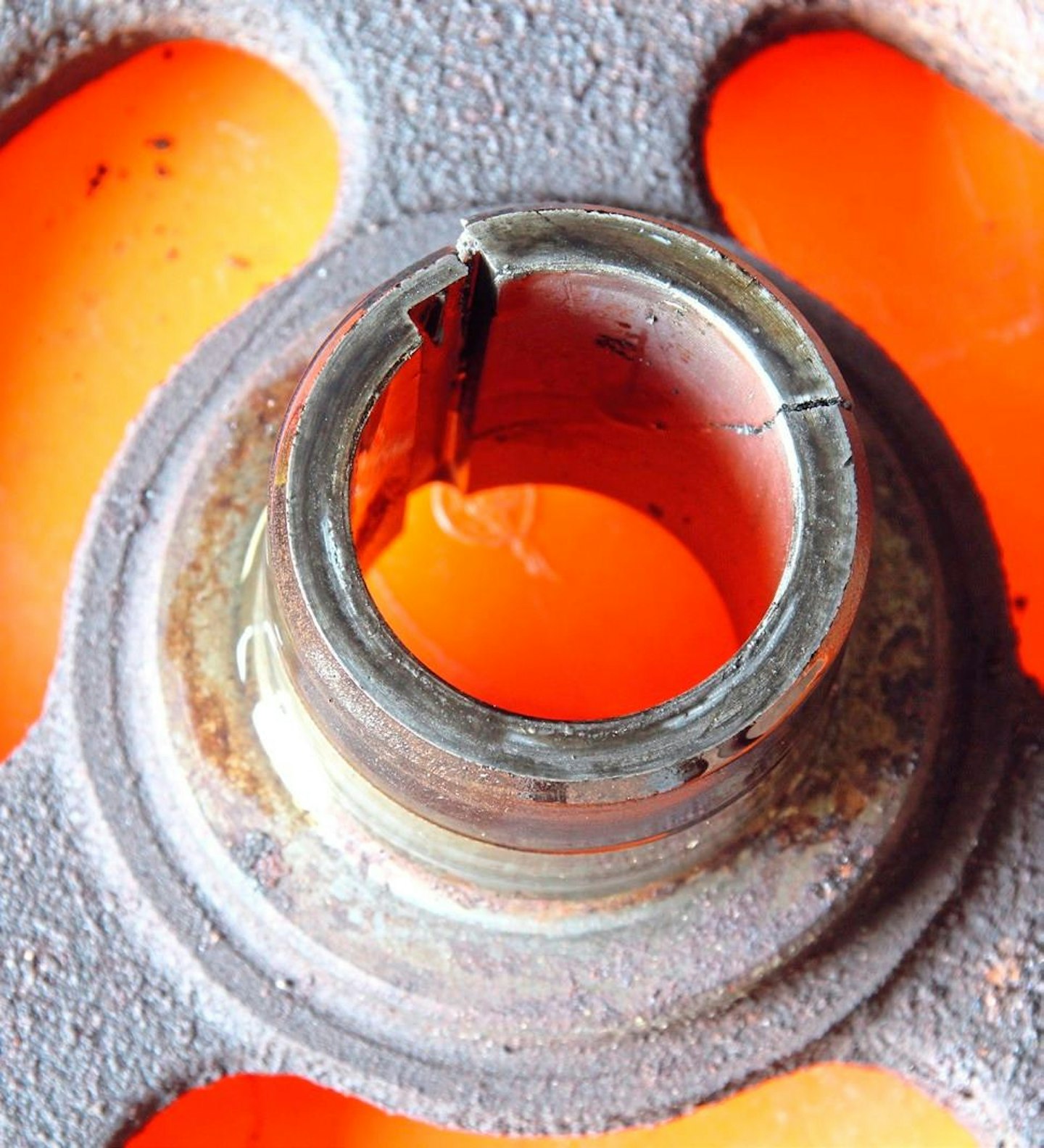
Expect the unexpected!
Ed says
A Are you sure? We've found cam timing errors woefully common after repairs. Remove the spark plugs. Turn the crank to indicated TDC and insert a long screwdriver carefully into no.1 plug hole. Rock the crank pulley and carefully probe to see if the piston is, in fact, at its highest point (top dead centre). If not, turn the engine until it is and observe the pulley. If, as you suspect, it indicates 40ºATDC, remove the pulley and investigate. We once found a pulley that had split and turned on the crankshaft presumably from something falling and jamming in it while the engine was running (photo).
RENAULT 4
STARTER’S ORDERS
Q My Renault 4 is very hard to start after a few days and stutters going up hills. Otherwise, it runs very sweetly.
Dan Modi, Standish
Ed says
A We think you have a fuel supply issue. Make sure that rubber hoses are in good condition and tight and that the fuel tank pickup gauze is not mummified or the tank full of sediment. Change a disposable fuel filter if it’s of uncertain age. Check gauze filters which may be built into the fuel pump and/or carburettor. Remove the fuel pump, drain it of petrol and check that the one-way valves operate correctly using a long, clean plastic tube, alternately lightly sucking and blowing on the outlet and inlet in turn. There should be a sharp on-off action as you alternate. If not, the valves are defective. If the pump can be dismantled, inspect and clean. Otherwise, replace it. If the oil smells strongly of petrol, the pump diaphragm has failed. Replace the pump; change the oil and filter.
CARBURETTORS
SOMERSET FLOODS
Q My Austin Somerset has a rebuilt carb and fuel pump. After 2500 fault-free miles, the carb has started dripping fuel when running.
Robin Laughlin, Suffolk
Matt says
A It sounds like the carb's flooding – ie the float chamber is continuing to fill, when already full. Maybe the valve has started to unscrew itself, or a particle of debris is preventing the float needle valve from fully closing. If it's a chip of black material, the fuel hoses have shed bits of rubber into the fuel system. Rusty particles, on the other hand, are likely from the fuel tank or pipe. Install a fuel filter just before the fuel pump, in such a way that it will trap sediment and not just let it fall back down the pipe when the engine is switched off. The carb may have a built-in mesh filter just by the inlet stub.
Perhaps the carburettor float has split, causing it to take on a little fuel inside and sink – fooling the needle valve into admitting more fuel even when the chamber is full. Hold the float by your ear and shake it. Listen for the tinkle of liquid inside.
READER'S TIP
Slow puncture? Spray tyre beads, tread and valve seat with soapy water and look for little mountains of bubbles to appear.
Luke Germain, Ingleton
Buy a telescopic ‘aerial’ magnet. Never fumble a washer off a stud (and drop it into the depths) again!
Mark Thurlow, Stoke-on-Trent
FAILURE OF THE MONTH
Ed fixes a misunderstanding… again…

I didn't try to use this carb before examining it. Good job, too. The primary throttle butterfly and mixture were both closed right off. The carb was 'set up' to idle on its secondary throttle butterfly alone (below), which had been wedged open by slackening the screws and misaligning the butterfly plate! The engine idled beautifully, once corrected.
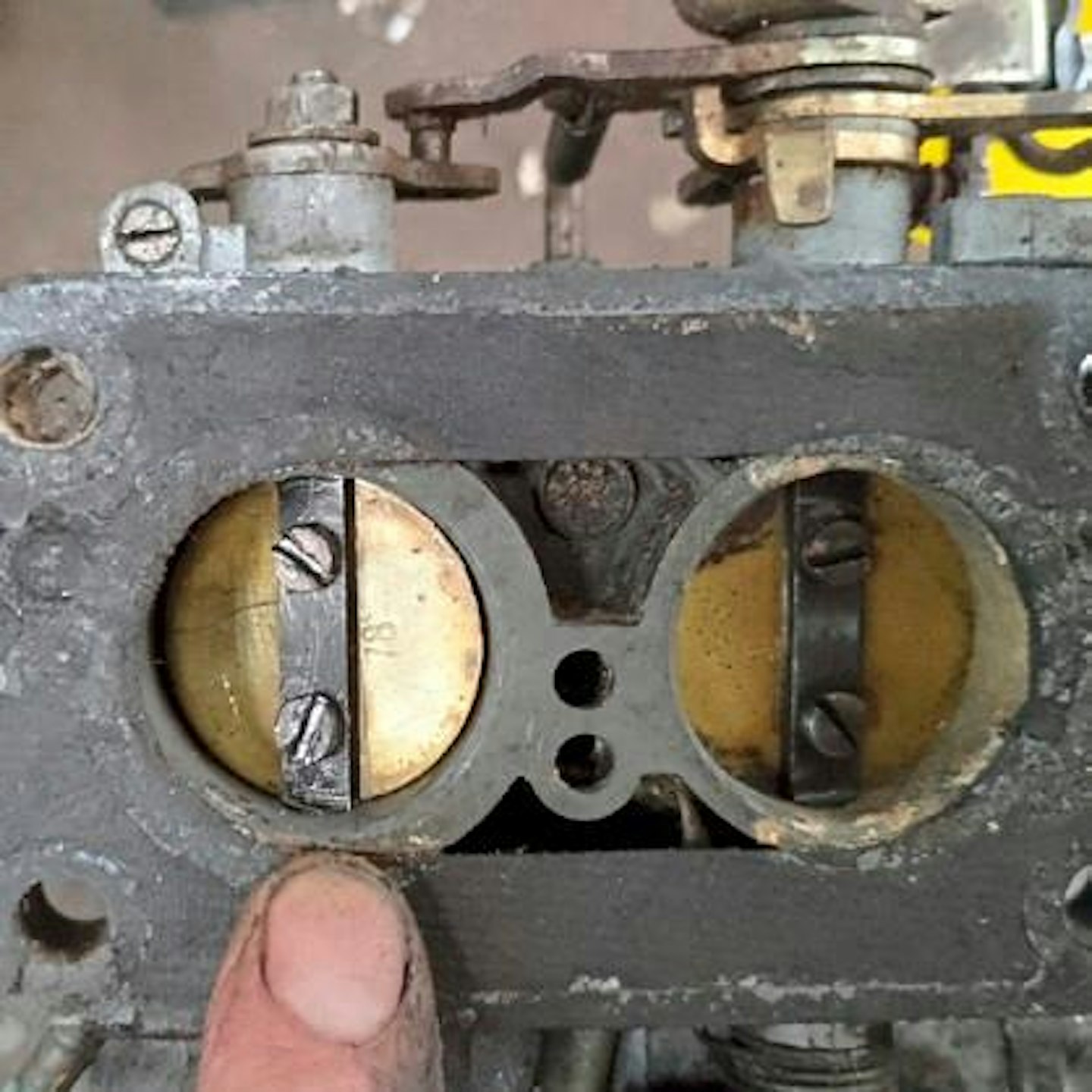
Subscribe to a PC Print+ Subscription today and you'll get instant digital access PLUS FREE UK delivery so you'll never miss an issue again. Check out our offers today.
